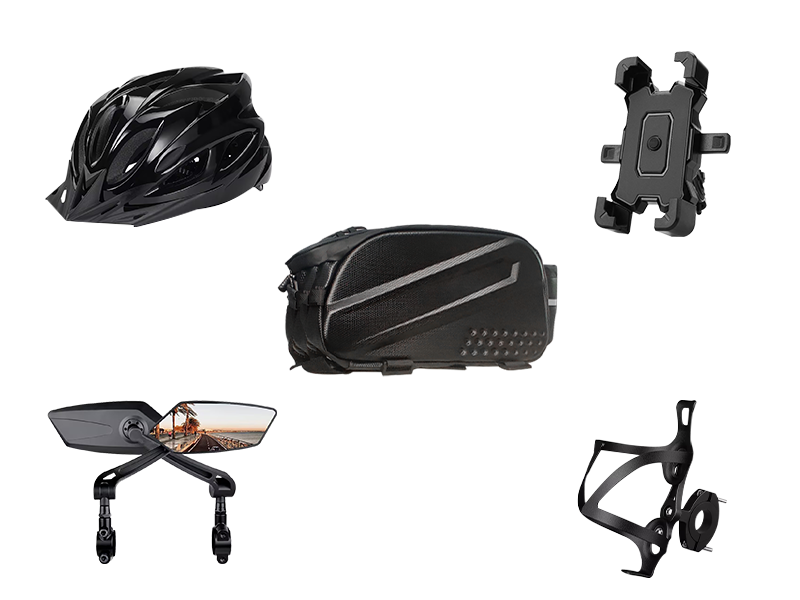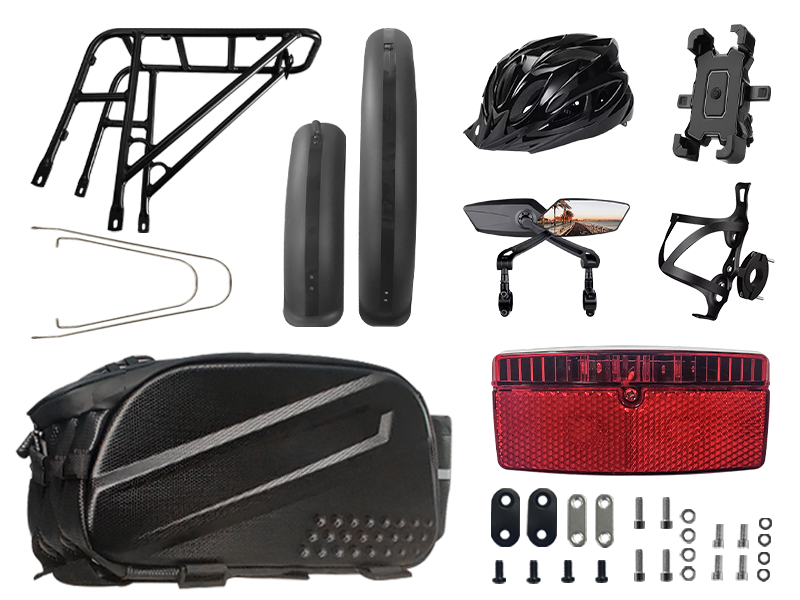Single-Motor vs. Dual-Motor Electric Bikes: Key Performance Differences
JAN 14, 2025
When it comes to choosing the right electric bike, one of the most important decisions you'll make is whether to go for a single-motor or dual-motor model. Both options offer unique advantages and are tailored to different riding needs. In this blog post, we'll explore the key performance differences between single-motor and dual-motor electric bikes to help you make an informed decision.
1. Power and Speed
One of the most obvious performance differences between single-motor and dual-motor electric bikes is the amount of power they deliver. A single-motor eBike typically uses one motor to propel the bike, offering a moderate level of power suited for city commuting, casual rides, and mild off-road trails. These bikes are typically equipped with motors ranging from 250W to 750W.
On the other hand, a dual-motor eBike is equipped with two motors—one in the front wheel and another in the rear wheel. This setup significantly boosts the power output, often ranging between 500W to 1500W in total. The added power allows dual-motor bikes to achieve higher top speeds and handle steeper inclines more easily. With two motors working in unison, these bikes can offer a smoother, faster, and more powerful ride.
2. Hill Climbing Ability
Hill climbing is where the performance difference between a single-motor and dual-motor eBike is most noticeable. A single-motor eBike may struggle on steep hills or uneven terrain, especially when the motor is on the lower end of the power spectrum. Riders might need to use more effort or experience slower speeds on uphill climbs.
In contrast, dual-motor eBikes excel when it comes to tackling hills. With the power of two motors, these bikes are far more capable of maintaining a consistent speed while ascending steeper inclines. The combined torque from both motors provides a significant advantage, making them ideal for riders who frequently navigate hilly terrain or challenging off-road conditions.
3. Battery Life and Efficiency
Battery life is a critical factor for electric bikes, and dual-motor bikes generally use more energy due to their higher power output. As a result, single-motor eBikes typically offer better range on a single charge, especially when used on flat terrain or for commuting. If you're looking for efficiency and longer battery life for daily use, a single-motor bike might be the better option.
On the other hand, a dual-motor eBike may consume more battery power because of the additional motor. However, many high-end dual-motor bikes are equipped with larger or more efficient batteries to compensate for this. It's important to consider that while dual-motor eBikes can drain the battery faster, they also provide more power, meaning you'll get more out of your ride in terms of performance, especially on difficult terrains.
4. Handling and Stability
Handling is another area where the number of motors can affect the riding experience. Single-motor eBikes are generally lighter and more agile due to having fewer components. This makes them easier to handle on urban streets, narrow paths, and tight turns. If you're looking for a bike that's more nimble and perfect for commuting or casual rides, a single-motor model will offer a more responsive and manageable experience.
However, dual-motor eBikes can provide superior stability, especially on rough or off-road terrain. The additional motor helps to distribute power evenly across the wheels, which improves traction and handling. Dual-motor bikes are particularly beneficial for riders who enjoy riding on rugged trails, dirt paths, or snowy roads, where additional control and balance are crucial.
5. Price and Weight
Price and weight are two practical considerations when choosing between a single-motor and dual-motor electric bike. Single-motor eBikes are generally more affordable, as they have fewer components and require less advanced technology. They also tend to be lighter, making them easier to carry and maneuver, especially for those who need to transport their bikes on public transport or up stairs.
Dual-motor eBikes, due to their increased power and more complex design, are typically more expensive. The additional motor, larger battery, and advanced features all contribute to the higher price tag. Additionally, these bikes tend to be heavier, which can make them harder to transport or handle in certain situations. However, for riders seeking superior performance and capabilities, the added cost and weight may be worth it.
6. Who Should Choose Each Type?
-
Single-Motor eBikes: Ideal for casual riders, commuters, and those who primarily ride on flat terrain or smooth roads. They're great for people who need a bike for everyday use, light off-roading, or urban commuting.
-
Dual-Motor eBikes: Best for experienced riders or those who need a more powerful bike for off-road adventures, steep hills, or long rides. They’re perfect for people who want to tackle challenging terrain, require more speed, or simply desire the extra power for a smoother, faster ride.
Final Thoughts
In summary, the main difference between single-motor and dual-motor eBikes lies in power, speed, hill-climbing ability, efficiency, and handling. Single-motor eBikes are efficient, cost-effective, and well-suited for casual riders and commuters, while dual-motor eBikes offer superior performance for riders who need extra power, stability, and versatility on tough terrain. By understanding these key differences, you can choose the eBike that best fits your riding style and needs.
No matter which option you choose, both single and dual-motor electric bikes offer a fantastic way to enjoy the freedom and convenience of cycling, just with varying levels of power and performance to suit your preferences.












